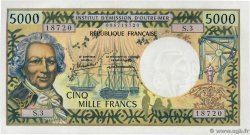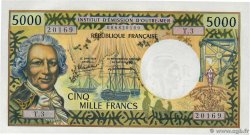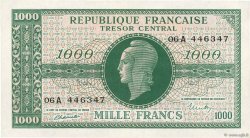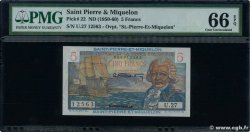Live auction - 518137 - 50 Centimes TAHITI 1920 P.-


Чтобы принять участие в торгах, вы должны войти в систему и стать подтвержденным участником аукциона. Войдите, чтобы сделать ставку. Ваш аккаунт будет подтвержден в течение 48 часов. Не ждите до закрытия торгов, чтобы зарегистрироваться.Сделав ставку на данный товар, вы вступаете в юридическое соглашение на покупку выбранного товара и нажатием кнопки «Сделать ставку» подтверждаете принятие вами условий интернет-аукционов cgb.fr.
Ставка может бить сделана только в полном эквиваленте евро. Торги закроются согласно времени, указанному в описании товара, все ставки, сделанные после закрытия торгов, учитываться не будут. Не следует откладывать предложение вашей ставки до последнего момента, так как система может не успеть обработать вашу заявку, и ваша ставка не будет принята. Более детальную информацию вы найдёте здесь: FAQ по интернет-аукционам.
Все ставки победителей подлежат комиссии 18%.
Все ставки победителей подлежат комиссии 18%.
| Оценить : | 5 000 € |
| Цена : | 2 600 € |
| Максимальная предлагаемая цена : | 2 700 € |
| Конец торгов : | 07 January 2025 18:41:47 |
| Участников : | 2 Участников |
Номинальная стоимость: 50 Centimes
Дата: (1920)
Период/Провинции/Банки Banque André Krajewski
Ссылка в каталоге: P.-
Дополнительные ссылки: K.539
Алфавит - Порядковый номер : N°731
Комментарий
Les billets de la Banque André Krajewski sont très rares, cet exemplaire est exceptionnel. Composé de deux parties unifaces sur papier fort. Il ressemble au Bon pour 2 Francs illustré dans le Kolksy mais en version anglaise. Au recto (uniface), seul le texte en haut est en français "Bon pour cinquante centimes". Au verso (uniface) à nouveau un tampon Andre Krajewski, la valeur 0,50 et un tampon ovale : Krajewski Papeete (Tahiti) et le numéro 731 manuscrit au centre. Nous connaissons un autre exemplaire, numéroté 738 mais en version française ! (livre Tahiti et sa Monnaie, Ch. Beslu 1997). Peut-être que les deux parties devaient être collées ensemble à l'émission pour rendre le billet plus solide et faciliter une impression recto puis verso pour les versions françaises et anglaises. Le Docteur Kolsky indique que les exemplaires vus étaient sur carton mais peut-être étaient-ils aussi composés de deux parties collées. Ce document incroyable apporte décidément autant de réponses que de questions. (voir article Bulletin Numismatique 243 juillet 2024).
Banknotes from the André Krajewski Bank are very rare, this example is exceptional. Composed of two single-sided parts on strong paper. It resembles the Bon pour 2 Francs illustrated in Kolksy but in English version. On the front (single-sided), only the text at the top is in French \\\"Bon pour quinze centimes\\\". On the back (single-sided) again an Andre Krajewski stamp, the value 0.50 and an oval stamp: Krajewski Papeete (Tahiti) and the number 731 handwritten in the center. We know of another example, numbered 738 but in French version! (book Tahiti et sa Monnaie, Ch. Beslu 1997). Perhaps the two parts were to be glued together at the time of issue to make the note more solid and facilitate printing on both sides for the French and English versions. Dr. Kolsky indicates that the examples seen were on cardboard but perhaps they were also composed of two glued parts. This incredible document definitely provides as many answers as it does questions. (see article Bulletin Numismatique 243 July 2024)
Banknotes from the André Krajewski Bank are very rare, this example is exceptional. Composed of two single-sided parts on strong paper. It resembles the Bon pour 2 Francs illustrated in Kolksy but in English version. On the front (single-sided), only the text at the top is in French \\\"Bon pour quinze centimes\\\". On the back (single-sided) again an Andre Krajewski stamp, the value 0.50 and an oval stamp: Krajewski Papeete (Tahiti) and the number 731 handwritten in the center. We know of another example, numbered 738 but in French version! (book Tahiti et sa Monnaie, Ch. Beslu 1997). Perhaps the two parts were to be glued together at the time of issue to make the note more solid and facilitate printing on both sides for the French and English versions. Dr. Kolsky indicates that the examples seen were on cardboard but perhaps they were also composed of two glued parts. This incredible document definitely provides as many answers as it does questions. (see article Bulletin Numismatique 243 July 2024)








 Cообщить об ошибке
Cообщить об ошибке Распечатать страницу
Распечатать страницу Отправить мой выбор
Отправить мой выбор Задать вопрос
Задать вопрос Consign / sell
Consign / sell
 Информация
Информация














